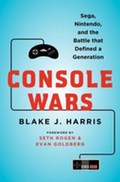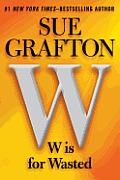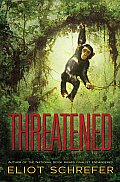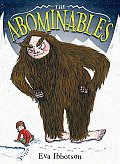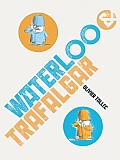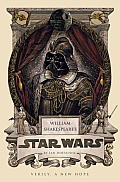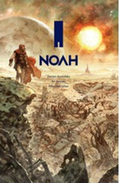Link to this review in the form of a comic strip by billba tagged nonfiction
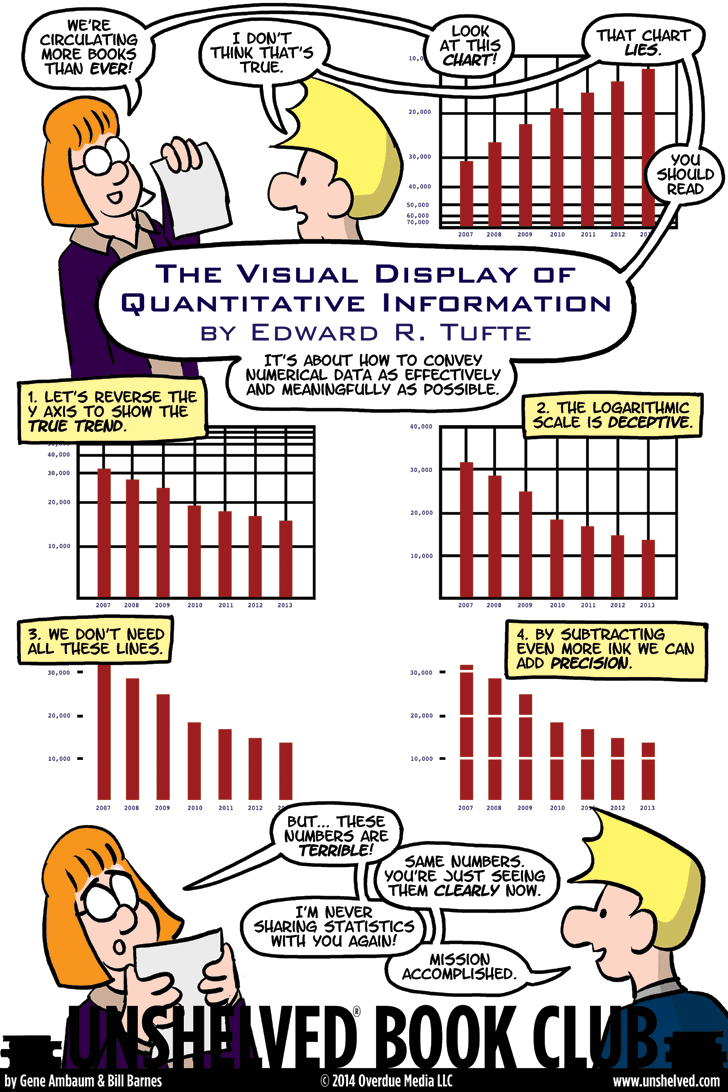
Click for the full-sized comic
@bookblurb How to convey numerical data as effectively and meaningfully as possible.
Link to this review by flemtastic tagged nonfiction
In 1990, if you gamed, you played a Nintendo gaming system. The reclusive, quiet company from Japan dominated the gaming landscape. Its sales made up over ninety percent of the market. Nintendo was able to dictate terms to developers, game makers, and retailers, infuriating everyone. When Sega, a scrappy, small video game console maker hired Tom Kalinske, a CEO known for his magic touch at Mattel (think Barbie and He-Man), change was in the air. Sega started marketing itself aggressively as the “anti-Nintendo,” the machine gamers graduated to when they were no longer little kids. That attitude and willingness to challenge Nintendo in retail pricing, the way it worked with developers, plus the release one of the most popular fighting titles ever — the bloody Mortal Kombat — made the competition for market share intense. This is the story of how Sega took on the monolithic Nintendo, and even held a majority of market share for a while.
Why I picked it up: I graduated from high school and entered college during these years. I played Duck Hunt with my friends and Donkey Kong on my breaks at the pizza joint where I worked.
Why I finished it: Kalinske and Nintendo disliked each other enough from all the hijinks and undercutting that they had to be bodily separated by the Toys R Us chairman in the hallway outside an industry meeting where analysts, bankers, and retailers gathered to hear about the future of gaming.
There were neat details about certain games. Nintendo bet heavily in its early years on a game called Radarscope in arcades. They got early (bad) feedback, and did a last second switch for Donkey Kong, which went on to be a massive hit and saved Nintendo. Popular games like Sega’s Sonic the Hedgehog was almost quite different, until Kalinske argued for changes. (Sonic’s sidekick was originally a busty girl named Madonna.)
It’s perfect for: Steve Wiebe, who taught at my son’s middle school. He was one of the stars of the documentary The King of Kong: A Fistful of Quarters.
@bookblurb How Sega took on Nintendo in the early 1990s.
Link to this review by emilyreads tagged mystery
Two seemingly unrelated deaths open a Pandora’s box of unknown relatives, medical malpractice, and homelessness in the latest Kinsey Millhone mystery. A homeless man found dead on the beach had Kinsey’s name and number in his pocket. Turns out, he’s a distant cousin on her father’s side, who Kinsey, orphaned in a car accident at age five, never knew existed. Soon she is in the thick of family drama; the dead man, Terrence, named her as the sole beneficiary of the half-million dollars he’d won in a wrongful-conviction settlement. Meanwhile, a shiftless private detective is shot by unknown assailants, and Kinsey finds herself drawn into settling his affairs because his latest case uncovered damaging information about Terrence’s cause of death. With cameo appearances by a swoon-worthy elderly neighbor, his hypochondriac brother, and a terrible Hungarian cook, this latest chapter in Grafton’s alphabetical series does not disappoint.
Why I picked it up: I’ve already committed myself to the first twenty-two letters of Grafton’s alphabet, so I couldn’t stop now.
Why I finished it: The last twenty pages of any Kinsey mystery are always a always heart-stopping and action packed, plus someone often dies, and I wanted to make sure Henry’s new cat, Edward, was okay.
It’s perfect for: Mildred, who thinks mysteries are too simple, too gory, and too ripped-from-the-headlines. Grafton’s no-nonsense, intelligent prose and the throwback fun of her 1980s setting can win over even the hoity-toitiest book snob.
@bookblurb Two seemingly unrelated deaths open a Pandora’s box in the latest Kinsey Millhone mystery.
Link to this review by flemtastic tagged coming of age
Luc is an orphan who earns coins by helping to do dishes at the local café in Gabon. When the Professor comes to town toting a silver briefcase, all Luc can think about is what is in the case and how he can steal it. Luc accompanies the Professor into the wilds to study chimpanzees, in part because of his magnetic personality and also to get away from his abusive handler.
They soon locate a chimpanzee family group and are attempting to observe their behavior. Although they try to watch the chimpanzees from afar, the chimps are curious and soon Luc and the Professor are trying to fit in with the chimpanzees while avoiding poachers and predators. Then the Professor gets very sick.
Why I picked it up: I had read Schrefer’s National Book Award Finalist Endangered last year and really enjoyed the story of an American girl living in peril with bonobos at an animal refuge.
Why I finished it: Luc is an enjoyable character, but he is not an angel. He spends a good portion of the book planning to rob the Professor. When his former handler comes after him, I could feel Luc’s terror. But the relationship that Luc develops with the chimps is the real highlight of the book. While one chimp takes a real shine to Luc, others have a very antagonistic relationship with him and, at times, he is in real danger. At one point, Luc sees the chimpanzees stalking him as a group, much like he’s seen them do when hunting, right before they ripped their prey apart limb-from-limb.
It’s perfect for: My niece Emma. She has always wanted a pet monkey. Luc has a pet vervet monkey named Omar that is either on his shoulder or skittering through the trees, trying to stay ahead of predators. Emma would love how Luc cares for Omar — he even risks his life to save him when a group of chimps hunts him.
@bookblurb Luc accompanies the Professor into the wild to study chimps, and also to rob him.
Link to this review by snow tagged fantasy • coming of age
The Yeti family has lived in the mountains near Tibet for a long time, but now tourism has brought humans dangerously close to their secluded habitat. With the help of two children, siblings Con and Ellen, the Yeti attempt a dangerous journey to England where they hope to find sanctuary at the ancestral home of their human governess, Agatha. But when a hunt club sets its sights on a exotic hunt featuring them, the Yeti need their friends to help them survive.
Why I picked it up: I’ve been a fan of Ibbotson’s work since it was first brought to the States back in the late 90s, during the Harry Potter heyday, when publishers were scrambling for more British children’s fantasy.
Why I finished it: It has the same gentle humor and mild action as Ibbotson’s other children’s books. (Sadly, though, this is the last Ibbotson book, published posthumously.) The Yeti are delightful with their big, hairy bodies and backward feet, and Con and Ellen are cheerfully plucky. The trip across the globe doesn’t downplay the dust and bother of travel, but it’s adventurous and full of mysterious places and new people. She shows the power of both peaceful resistance and of the “little guy.” The people willing to speak up for the Yeti include local school children, the homeless, the elderly, and the blue-collar truck driver. There is something comforting in reading a tale that says, “Yes, you can make a difference just by being willing to help.”
Readalikes: Budding environmentalists should also check out Ibbotson’s Island of the Aunts. It’s a bit more fantastic than The Abominables — with a plethora of mythical sea creatures — but has the same dry wit. Graphic novel fans will find a soul mate in James Burks’ Gabby & Gator, about a young woman who befriends a lost (and carnivorous!) alligator.
@bookblurb The Yeti family leaves Tibet for England to find sanctuary, but a hunting club sets its sights on them.
Link to this review by darcy tagged picture book
Two soldiers, one orange (obviously French) and one blue (obviously English), sit across from one another divided by a fence. They watch each other all day, armed and prepared to fight.
Why I picked it up: The title caught my attention. I have a special fondness for British and European history, and I wanted to know how a picture book would use Waterloo and Trafalgar.
Why I finished it: In a wordless picture book, Tallec shows children the pointlessness of war. I couldn’t wait to see what each solider would do to annoy the other. The blue soldier happily watches a snail, and later acts horrified when he spies the orange soldier cooking the snail on a barbecue. They spy, shout, and even engage in a noise war with music until the tension mounts and they finally resort to their guns.
Readalikes: Another wordless book, Zoom by Istvan Banyai, which draws you in with shifting perspectives in the illustrations. Each page settles you in to what you believe is a solid reality. But with each turn of the page, the perspective pulls, and what was once a postcard from a friend becomes part of an ad on the side of a bus. Zoom ends by pulling back to reveal a picture of the Earth, and a sense that all those little things don’t matter much. I feel the same way when reading Waterloo & Trafalgar. At one point I have an affinity for the orange soldier, a page later my alliance shifts to the blue, and then, at the end of the book, the perspective changes and I see the small area the soldiers have been fighting over.
@bookblurb Two soldiers sit across a fence from one another, armed and prepared to fight.
Link to this review by billba tagged classic • science fiction
Star Wars, the original movie (I will never buy this “A New Hope” nonsense), presented in the form and style of a Shakespeare play.
Why I picked it up: In fifth grade I was a huge Star Wars nerd. I even published a fan club newsletter called the Daily Droid. (It was weekly, and the fan club had no other members than me.) Then I discovered girls, followed one of them into an English Lit class, and stayed for most of high school. It’s a small miracle I never wrote this book myself.
Why I finished it: This is no simplistic translation into iambic pentameter and Elizabethan English. Doescher shows real insight into both the trilogy and Shakespeare’s style, with characters making asides to the audience that reveal much more about their knowledge and motivations than the movie could (or would) ever show. When Darth Vader has Leia captive he muses:
”The Princess hath shown great resistance to
The mind probe - ‘twere as if she knew the Force
And hath a Jedi’s blood to overcome
The piercing of her mind by a machine.
Belike it shall be some length of time yet be
Until we can extract the thoughts therein.”
It’s perfect for: Rolf, whose homeschooling family has started limited readings of the Bard. Gene has often suggested Star Wars: The Manga as a great introduction to manga because the universal knowledge of the story allows readers to focus on learning a new storytelling form. The same principle applies here. Rolf’s boys will be charmed by the very Puck-ish R2-D2, who bleeps and bloops when talking to the other characters, but reveals his machinations in perfect English to the audience when he has the stage to himself.
@bookblurb The original Star Wars movie presented in the form and style of a Shakespeare play.
Link to this review by geneambaum tagged picture book • humor
Musk Ox and Zebra are back, this time in a counting book. Musk Ox is supposed to star on the first page, but he gets lonely and goes to the “2 yaks” page for a visit. Annoyed, Zebra tries to get him to go back to his page. Things don’t go Zebra’s way.
Why I picked it up: It features the same characters in a is for musk ox.
Why I finished it: Musk Ox fixes page one. He puts a sign on Zebra’s back that says “1 zebra kick me,” which Zebra doesn’t see. Then he insists rightly that he didn’t mess up the “2 yaks” page by being on it — there were still only two yaks on it. And then he annoys Zebra throughout the rest of the book, making fun of rote counting books along the way.
It’s perfect for: Bethany, whose mother used to babysit me. Her brother and I used to collect snails in the garden, but she hated them. I know she’d love the “6 snails” page because Musk Ox steps on the lot of them. (He explains to Zebra that “that’s nature.”)
@bookblurb Musk Ox is supposed to star on page one, but he gets bored and annoys Zebra through the rest of the counting book.
Link to this review by geneambaum tagged graphic novel • classic • fantasy
During a long, punishing drought, wicked men rule the world. Noah’s home is a refuge for his family. After he starts to have visions of a flood that will destroy the world, he tries to warn the people of Bab-Ilim. He tells them that men need to change, to treat the world with mercy or the Creator will destroy it. Bab-Ilim’s leader, Jubal-Cain, does not heed the warning; instead he leads his men on an attack that destroys Noah’s home and the animals that live there.
Noah and his family set out for Mount Ararat. There, with the help of the monstrous, six-armed Watchers, they build an ark that will save the beasts when the rain comes.
Why I picked it up: The icon on the front cover, above the title — it’s the shape of the ark. It promised good design, so I took a look. (I had no idea it was a graphic novel adaptation of Aronofsky’s first draft for the screenplay for Noah.)
Why I finished it: I enjoyed Aronofsky’s version of angels. When they saw Adam and Eve fall from the Creator’s grace for a single mistake, they descended to earth to teach them science and magic. This cost them their wings, and caused the Creator to abandon them. Now they help Noah because they can see the Creator is talking to him, and they hope to have a chance to serve the Creator again.
And Noah is a serious bastard. After men realize the truth of his visions and come begging for a place on his ark, Noah tells them to start building. He makes false promises to take a few of them on his ship, but privately he decides the world will be better off without men, and that his sons will be the last.
Readalikes: After the rain starts, Jubal-Cain and his men lay siege to the ark. There’s a brutal battle between them, Noah, and the Watchers. It reminded me of the book-length, ultra-violent battle in Joe Abercrombie’s The Heroes, in which two sides try to take and maintain control of a hill, though there’s much more swearing in Abercrombie’s book.
@bookblurb Graphic novel adaptation of the first draft of Darren Aronofsky’s Noah screenplay.

